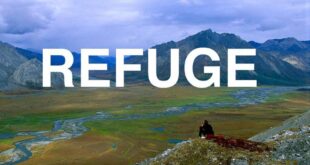By SFNF
The recent prescribed pile burn in Pacheco Canyon on the Santa Fe National Forest (SFNF) 7 miles northeast of Santa Fe was a great example of shared stewardship across ownership boundaries to reduce wildfire risk and protect communities and other assets in the wildland-urban interface (WUI), SFNF Supervisor Debbie Cress said today.
Crews completed a total of 443 acres of piles of slash and woody debris on Forest Service lands and another 111 acres on the Pueblo of Tesuque’s Vigil Grant. The two prescribed pile burns were implemented by the SFNF, Pueblo of Tesuque, Pueblo of Santa Clara, New Mexico Forestry Division, Santa Fe County Fire Department, City of Santa Fe Fire Department and the All-Hands All-Lands Burn Team, a collaboration by Forest Stewards Guild, The Nature Conservancy and Rio Grande Water Fund, with additional support from the Carson National Forest.
“We want to thank all of our partners and collaborators for making this critically important project a success,” Cress said. “Projects like this are the primary tool we have to improve the health of our forests by restoring them to historic conditions, reducing the fire hazard for the long term, and making them better able to withstand stressors like climate change and drought.”
The 2,200-acre Pacheco Canyon project is within the footprint of the Greater Santa Fe Fireshed. The Greater Santa Fe Fireshed Coalition is a collaborative effort focused on using fire as a management tool to improve the health and long-term sustainability of the fire-adapted forests within a 107,000-acre perimeter surrounding Santa Fe.
Earlier restoration work in Pacheco Canyon helped firefighters contain the lightning-caused 2020 Medio Fire at approximately 4,000 acres, a real-time example of the efficacy of thinning and prescribed burning to reduce the risk of catastrophic wildfire. If the Medio Fire had crossed Forest Road 102, the Pacheco Canyon Road, values at risk included the Santa Fe ski basin and the municipal watershed, which supplies up to 40% of the water for the City of Santa Fe.
The SFNF will continue to work with partners and collaborators, including federal, tribal, state and local governments and non-governmental organizations, to build on best available science and lessons learned to reduce hazardous fuels, encourage public engagement through fire-adapted communities in the WUI, and address post-wildfire risks, recovery and reforestation.
 SantaFeToday.com Santa Fe’s Hometown News
SantaFeToday.com Santa Fe’s Hometown News

